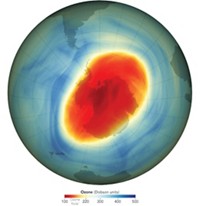Advertisement
Grab your lab coat. Let's get started
Welcome!
Welcome!
Create an account below to get 6 C&EN articles per month, receive newsletters and more - all free.
It seems this is your first time logging in online. Please enter the following information to continue.
As an ACS member you automatically get access to this site. All we need is few more details to create your reading experience.
Not you? Sign in with a different account.
Not you? Sign in with a different account.
ERROR 1
ERROR 1
ERROR 2
ERROR 2
ERROR 2
ERROR 2
ERROR 2
Password and Confirm password must match.
If you have an ACS member number, please enter it here so we can link this account to your membership. (optional)
ERROR 2
ACS values your privacy. By submitting your information, you are gaining access to C&EN and subscribing to our weekly newsletter. We use the information you provide to make your reading experience better, and we will never sell your data to third party members.
Environment
NF3 Measured in Air
Levels of the greenhouse gas exceed industry's estimates
by Rachel Petkewich
November 3, 2008
| A version of this story appeared in
Volume 86, Issue 44

THE FIRST atmospheric measurements of nitrogen trifluoride, a potent greenhouse gas, indicate that the man-made gas, which is used in manufacturing electronics, is much more prevalent in the atmosphere than industry estimated, according to researchers at Scripps Institution of Oceanography (Geophys. Res. Lett. 2008, 35, L20821).
Electronics manufacturers apply NF3 to clean chambers used for chemical vapor deposition of key compounds onto glass or silicon wafers. Laboratory studies indicate that the process destroys roughly 98% of NF3.
NF3 is considered 17,000 times more potent as a global-warming agent than an equal mass of CO2. NF3's warming potential was not evaluated until 2001, so it is not monitored under the Kyoto protocol. Earlier this year, atmospheric chemists Michael J. Prather and Juno Hsu of the University of California, Irvine, predicted that emissions of NF3 are likely greater than industry's estimates. In addition, production of the gas has increased with growing demand for electronics products such as flat-panel displays. Prather and Hsu therefore called for atmospheric measurements of the gas (C&EN, July 14, page 6).
Heeding the call, the Scripps researchers used gas chromatography and mass spectrometry to quantify NF3 in archived air samples collected from around the world over three decades.
NF3 is notoriously difficult to separate from similarly volatile atmospheric gases, says Ray F. Weiss, a geochemistry professor who led the study. To get around the problem, his team prepared samples by using a chemical absorbent to remove carbon dioxide and low-temperature fractional distillation to separate other gases prior to analysis. Their results show that atmospheric NF3 has increased globally from about 0.02 ppt in 1978 to 0.454 ppt in July 2008.
Atmospheric measurements provide an essential check on emissions estimates, which may have substantial errors because leakage rates during production and use are difficult to estimate, says Stephen A. Montzka, an atmospheric chemist at the National Oceanic & Atmospheric Administration, in Boulder, Colo.
Mack McFarland, an atmospheric chemist at DuPont, says industry must now determine whether estimates of total NF3 use are correct and whether there are unaccounted emissions such as during production, transport, or use.
Industrial groups welcomed the Scripps study. "Such measurement gives us a baseline for gauging our progress in further reducing NF3 emissions," says Robert F. Brown, spokesman for Air Products & Chemicals, the world's largest producer of the gas.





Join the conversation
Contact the reporter
Submit a Letter to the Editor for publication
Engage with us on Twitter